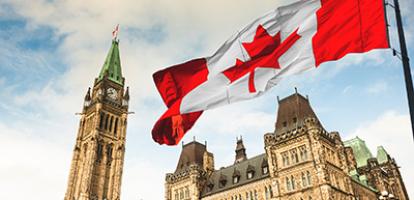In the current debate about how to make housing affordable in Canada, there is a curious omission: the role of monetary policy, both of excessively loose monetary policy in creating the problem and of more responsible monetary policy in solving it.
The global financial crisis of 2008-09 led central banks around the world to reduce interest rates to historically low levels, which made perfect sense during the crisis, but then to keep them there for more than a decade, which sowed the seeds of the affordability crisis we are now living through. Low rates were justified in two ways: inflation was low, so they seemed appropriate or at least not harmful in their role in inflation-targeting, and banks and other lenders that had invested heavily in U.S. mortgage-backed financial instruments needed the relief low interest rates provided to gradually repair their balance sheets and resume lending in the recovery from the U.S. housing crash.
Although Canada was not hit as hard by the global financial crisis as the U.S. and Europe were, the Bank of Canada also kept interest rates low. As a result, our house prices didn’t fall and our banking system remained in good shape.
Because of this loose monetary policy Canadian mortgage rates hovered around five per cent for more than a decade following the crash. The five-year fixed rate rose above six per cent only in June 2022, after the Bank of Canada started raising its overnight rate to deal with inflation. Before that, however, mortgage rates were much lower than the annual rate of increase of house prices, making property investment a “one-way bet”: Borrowing at five per cent to buy an asset that’s appreciating at well above five per cent is a great investment.
With rates low, the property boom picked up steam and house price inflation ramped up. From May 2015 to December 2019, the Teranet average house price index for 11 Canadian urban centres increased at a more-than-brisk annual pace of 12.4 per cent. But from December 2019 to May 2022, it hit a dizzying 15.6 per cent per year. Over the 10 years of 2012-22, average house prices in Canadian cities more than doubled, rising 127 per cent in Vancouver, 163 per cent in Toronto and 202 per cent in Hamilton.
In retrospect, as in fact some of us had pointed out at the time, the Bank of Canada should not have kept interest rates so low for so long. Rates that were negative in real terms created distortions in financial markets and perverse incentives for savers and investors. And goods-price inflation clearly was not as dead as it may have seemed at the time, which meant interest rates should have been higher to prevent its revival. But rates stayed low.
The massive rise in house prices that resulted from “too low for too long” has favoured older generations, whose homes have risen impressively in value. Many young households, who don’t have high incomes or savings but do have kids and critical housing needs, have been completely priced out of the market. With starter homes costing a million dollars or more in and around many Canadian cities, buying is impossible for people who don’t work in tech or finance or have parents with deep pockets. By stimulating property speculation by older households and rich foreigners, low interest rates may actually have reduced the supply of housing for those younger households who need it most. A recent estimate attributes 30 per cent of house purchases to investor demand. Many houses are owned by people who may not occupy them full time, if at all. Vacancy taxes that some provinces have imposed may help make such homes available to rentals but have not addressed the affordability problem in any substantial way.
Over the past 18 months, the world’s central banks, the Bank of Canada included, have finally raised interest rates to rein in the post-pandemic spike in inflation. In the short run, higher interest rates make things even more challenging for young households, who generally can afford only modest down payments. Although the federal and provincial governments desperately want to be seen to be addressing the problem of affordability, the measures they have so far enacted or proposed are unlikely to be adequate until house prices decline substantially. Some measures, like subsidies to first-time homebuyers, may actually keep the prices of starter homes high. Reducing the permissions builders need for residential construction will help but probably won’t have a dramatic effect on the price of building lots. High land prices seem to have led to bigger and bigger homes, as developers need to justify the overall price by providing luxury accommodations. Such homes won’t be bought by most young households.
In the longer run, however, higher interest rates will eventually exert downward pressure on house prices. To make housing affordable again, however, the pressure will have to continue until prices fall by enough to make mortgage payments reasonable for the average household. Because many five-year mortgages are still to be renewed, current data on debt-service ratios do not yet fully reflect the rise in mortgage rates since early 2022, introducing a lag in the effect of interest rates on prices. Current very low volumes of house sales do indicate that investor enthusiasm has pulled back drastically. But so far prices have moved only a little. It will take time for them to fall further.
As for interest rates, although there is widespread speculation that the next move by the Bank of Canada may be downward, it is crucial if we are to avoid a lost decade like the 1970s that the post-2008 era of unsustainably low interest rates not be allowed to return. Our target needs to be the Goldilocks interest rate: high enough for a time to bring house prices down but then not so low as to enable inflation to rise again from the dead.
Paul Masson, who has worked at the Bank of Canada, the OECD and the IMF, is a research fellow at the C.D. Howe Institute.





